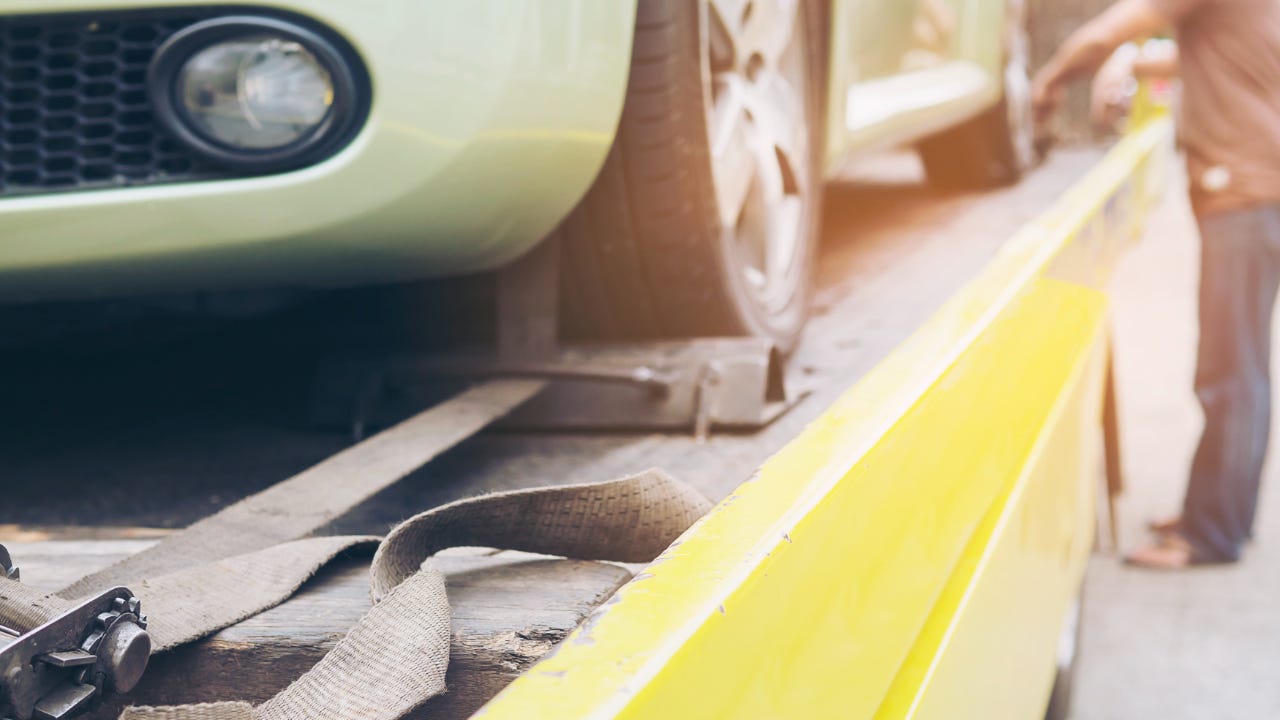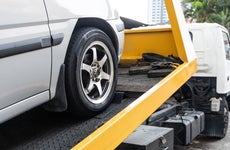How does repossession work? And how can you stop it?

The Bankrate promise
At Bankrate we strive to help you make smarter financial decisions. While we adhere to strict , this post may contain references to products from our partners. Here's an explanation for .
Key takeaways
- Requesting forbearance or reinstating your loan can help you avoid repossession.
- In many states, lenders aren’t required to give you notice before seizing your vehicle, so fast action is vital.
- Consider modifying or refinancing your loan before things get dire.
If you fall behind on your payments and your vehicle is at risk of repossession, the good news is that you can take steps to prevent it. Between managing your auto loan before missing payments, reinstatement and loan modification, multiple paths to avoid repossession exist.
You aren’t alone if you are currently struggling to make payments. Recent data from Fitch Ratings puts delinquency among subprime borrowers at 5.94 percent. This number is down slightly from the 30-year high in September. But it shows a significant percentage of Americans are currently more than 60 days late on their car payments.
How car repossession works
Auto repossession is an unpleasant experience. But understanding the process can help you work through it and potentially find a solution.
1. Borrower misses payments
Your lender has the right to repossess the vehicle as soon as you are in default — and to charge off your loan to a debt collection agency. The number of missed payments required to default on your loan depends on your state and loan contract. In some cases, you will only need to miss one payment to be in default. In other cases, you might need to miss two or three payments for an issue to arise.
At this stage, open communication with your lender is critically important. If finding a solution is possible, now is the time to ask. Some lenders may offer payment forbearance or other options for borrowers facing a short-term financial crisis, so ask if your lender has these accommodations.
2. Lender takes your car
Once in default, your lender may or may not notify you of its intention to repossess the vehicle. Call your lender to ask for a temporary payment arrangement to avoid repossession if you receive a notice. Depending on your state, the lender may be able to repossess your car at any time — whether or not you’ve received notice.
3. Lender sells the vehicle
Once the lender has possession of your vehicle, it could hold onto the vehicle until you catch up on your loan. But the more likely outcome is that the lender will sell the vehicle. In many states, the lender must notify you of the sale and allow you to reinstate your loan.
If you want to buy the car back before the sale, you’ll have to pay the full amount owed and any repossession expenses. In addition, many repossessed cars are sold at auction. You have a right to be there and place a bid on your vehicle.
4. Lender sends you a bill for any deficiency
After selling the vehicle, the lender must use those funds to cover your debts. Because used car prices remain high, your lender may be able to recoup its losses. If your lender breaks even, you will be off the hook — aside from the negative mark on your credit report.
But the sale price may not be enough to cover your entire debt. If you owe more than what your lender gets for selling the car, that’s a deficiency.
Unfortunately, in most states, your lender can sue you for deficiencies. For example, imagine you owe $10,000, but your lender only sells your car for $7,000. In that case, the deficiency is $3,000. The lender may have the right to sue you for the difference.
If there is a surplus from the sale, the lender may be required to pass it to you. This is rare, but if it does happen, you will at least have a small benefit from the repossession process.
Ways to stop repossession at each point in the process
The rules of repossession vary from state to state. In most states, the lender can repossess the vehicle as soon as you are in default. Depending on your loan agreement, that could mean missing just one payment.
The good news is that there are several steps between missing a payment and repossession. Based on your current situation, you can take the appropriate actions to prevent repossession.
If you haven’t received notice
If you can’t make your car payment, you’ll likely know about that financial reality well before your lender does. Instead of waiting for the lender to find out when you miss a payment, be proactive and call the lender to explain your situation.
The lender may be willing to hear you out to avoid the expense of repossession. Try to come to a reasonable solution together. For example, you can offer:
- More information about your situation.
- When you can make the next payment.
- What you can pay right now.
Depending on your history with the lender, you might be able to work out a reprieve or rework your loan agreement. This is especially true if this is the first time you have missed a payment.
If the lender has only sent notice
A lender can legally repossess your vehicle with or without notice in many states. Provided it does so without using physical force or entering a closed space, your lender could repossess your vehicle anytime.
If you do receive a notice of repossession, contact your lender. An open line of communication may result in a solution that avoids repossession. Explain your financial situation and see if the lender will discuss alternatives like loan modification.
If the lender is willing to hear you out, offer as many details as possible about when you can make a payment. Also volunteer how much you have available to put towards a payment today.
Ultimately, it can be in the lender’s best interest to work out a temporary arrangement. After all, the business wants to get paid, and you will likely need your car to get to work. Depending on the lender and your history, a temporary agreement is possible.
If the lender has taken your car
If the lender has already repossessed your vehicle, reinstatement of your loan — also known as curing the default — could be the best possible outcome.
Essentially, that means you are bringing the situation back to square one. In some states, you’ll need to pay the entire past-due amount. That includes every missed payment plus any late fees that have accrued. Typically, the lender will also require you to cover repossession fees before releasing the vehicle to you.
Once reinstated, you will need to continue making your regular car payments.
In other states, you might have to pay off the entire loan to get your car back. That process is called redemption.
If your state doesn’t have reinstatement laws and it isn’t built into your contract, you should still reach out to your lender. It may be willing to modify your loan to include it. If not, you can check to see when the vehicle will be auctioned off, and if you are able, buy it back.
Other ways to avoid repossession
Avoiding repossession is a top priority for most people. After all, your vehicle is likely a key piece of your ability to earn a living.
A few ways to avoid repossession include:
- Pay off the loan: Of course, paying off an entire auto loan is easier said than done. But if this option is within reach, it is one way to exit this situation. Note your lender may charge a fee for early payoff.
- Refinancing: This can be difficult since your credit score takes a hit from missing payments. If you can find a new loan with a lower interest rate or monthly payment, refinancing your auto loan could help make your loan more affordable.
- Declare bankruptcy. If you are behind on other bills, bankruptcy may be an option. However, while there are ways to keep your car during bankruptcy, it’s not a guarantee. Repossession may still happen if you aren’t able to find a workable solution in time.
The downside to these options is that you’ll likely need to come up with some amount of cash to resolve the situation. You may also face a time limit. Refinancing and bankruptcy can take months, putting you at more risk of repossession if you can’t make payments.
The bottom line
If you find yourself staring down the uncomfortable possibility of repossession, talk to your lender as soon as possible. With open lines of communication, the lender may offer a deal that works for everyone.
Otherwise, you can limit the damage of repossession by considering alternatives or finding a way to slow the process.
Related Articles



